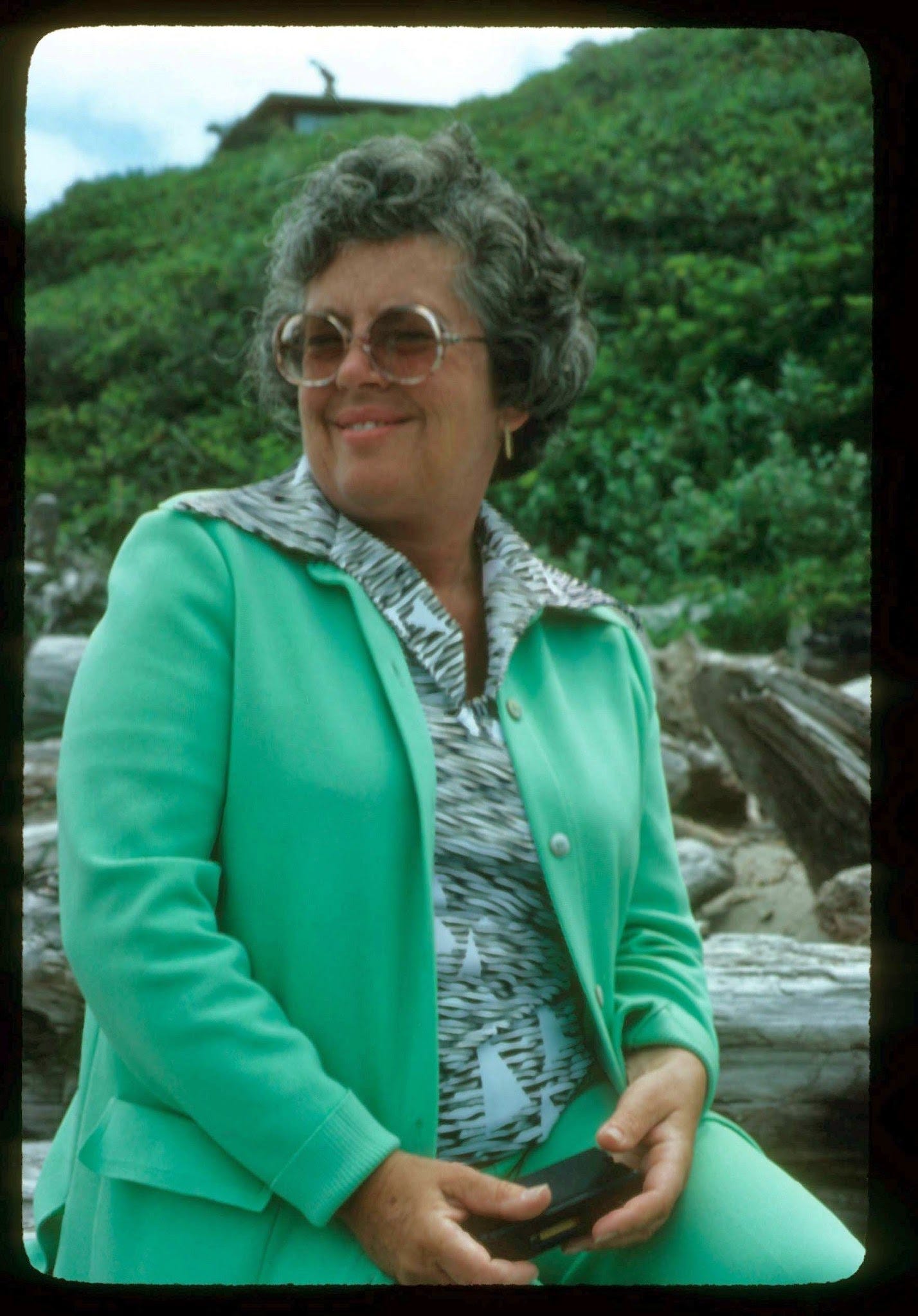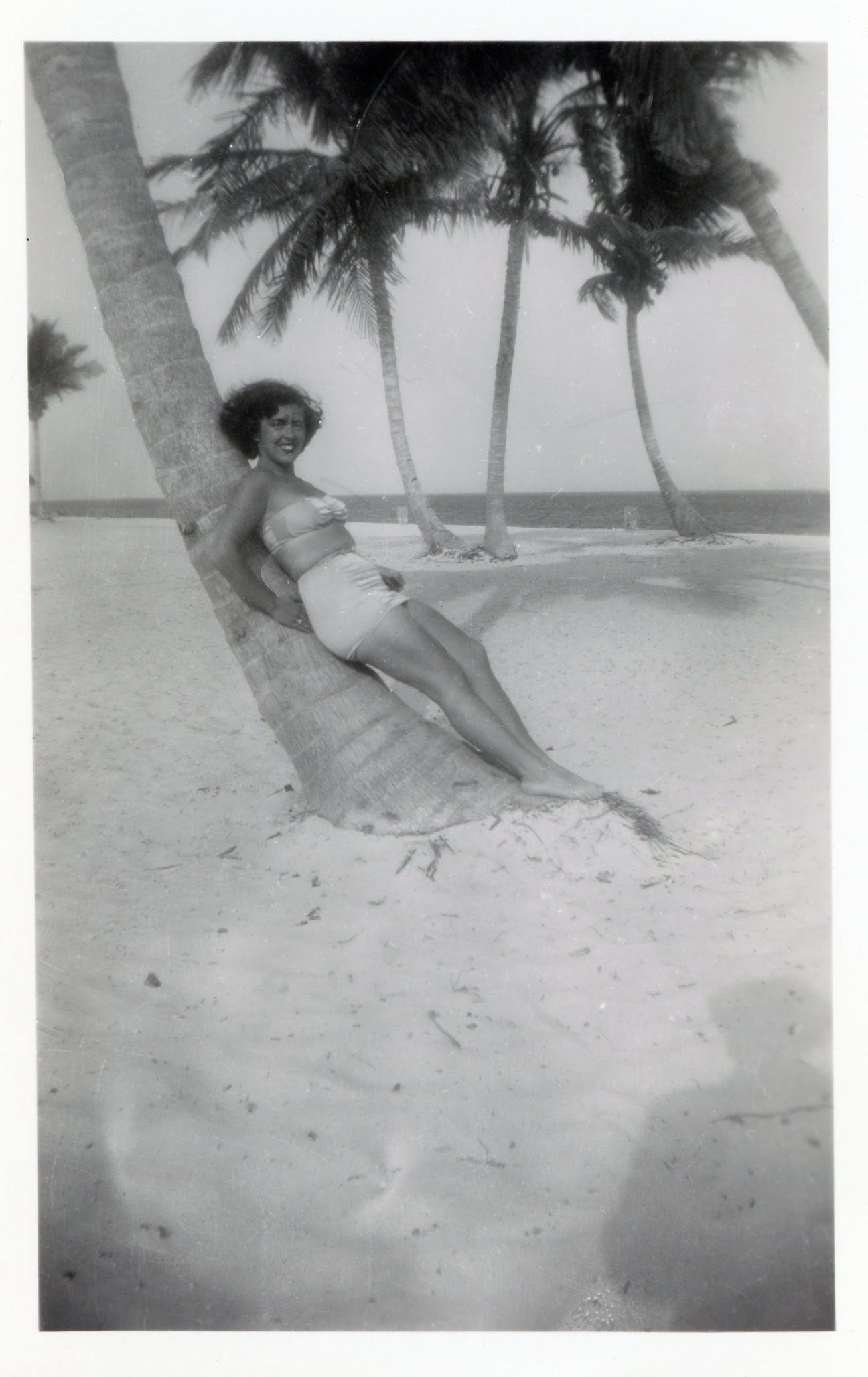My mother was beautifully dressed. Her clothes were always coordinated, always put together. She wore sets and suits and matching pieces, tops and bottoms that were made for each other. If she bought a skirt, she always bought the matching jacket and blouse. If she wasn’t sure she had shoes that worked, she would buy a pair that did before she left the store, and a bag, if needed. She never, ever bought one thing; she did not indulge in what became known in the fashion industry as “separates”. For instance, she never bought a sweater or a pair of pants that were just a single piece, without something specifically mated to them. She used to get upset when I came home from the mall with a new, random article of clothing—a cute sparkly top, a mustard-colored pair of corduroy bell-bottoms. “What does that go with?” was her usual plaintive wail. Of course, the real answer was “nothing”, and the random item would inevitably sit, unused, like an orphan in my closet, proving her point, but I was still annoyed by her question. In my teenaged opinion, only babies and old ladies wore things that matched, and I was neither of those. Anyway, I wasn’t trying to be “put together”; in fact, I probably wanted to look pulled apart.
Separates—that is, individual pieces of clothing that can be mixed and matched—have been a part of American fashion since the 1930s, but in my mother’s house it was permanently 1929. As far as I can remember, my mother was attired either in a housedress (a thin cotton shift that she wore over her pajamas while making breakfast and tidying the house; do those still even exist?) or she wore a suit or dress or some other all-of-a-piece outfit, even if she was just doing errands. When she and I took our first big trip together, to Hungary, I realized the full weight, literally and figuratively, of her style profile. We were going to be in Europe for ten days, and therefore she packed ten complete outfits, including the compulsory matching shoes and bags. Her suitcase weighed five thousand million tons, and as the younger, more agile member of our merry duo I had the challenge of wrestling it over Budapest’s potholed streets.

This trip took place when I was already fledged, out in the world, living on my own, and I was assembling a wardrobe of weird odds and ends that I collected impulsively, like a magpie. If I saw a piece of clothing that I liked, I bought it, without giving any thought to whether it could be worn with something I already owned and would achieve a functional sartorial harmony. As a result, I had a closet of things that I mostly admired in situ, taking them off their hangers and gazing appreciatively at them in my closet, since I had nothing to wear them with out in the world. I did have a certain consistency in what I did manage to wear. My uniform consisted of Danskin leotards with either painters’ pants or cargo jeans and pair of saddle-colored Earth shoes. I don’t recall how I came up with this combination or why I aimed to look like a prima ballerina who did construction on the side, but I stuck with it.
I didn’t realize how consistent my wardrobe was, how conspicuous this get-up was as a feature of my appearance, but my friends did. One year, they threw a surprise birthday party for me. I had been told it was a costume party, so I borrowed an actual clown outfit from a friend who happened to know an actual clown. When I arrived at the party, all the guests were dressed in leotards and painters’ pants and had put temporary red dye in their hair: In other words, they were dressed as me. (In case you’re tempted to do this same stunt for someone you know, DON’T. Seeing thirty facsimiles of myself completely freaked me out and I drank so many whiskey sours that I passed out and somehow became separated from at least half of the clown costume.)
Over time, the psychic incumbrance of owning lots of clothes that I never wore because they had no happy pairing in my closet made me both sad and exasperated, because I knew what a waste of money it was. Moreover, it made me the living example of having lots of clothes and not a thing to wear, for real. About three years ago, I saw a cute flowered tunic top online. The print was an unusual combination of colors—a bit of grass green and acidy yellow and a little dash of blue. Even though my default was to think I can wear absolutely anything with black pants, this looked like it wouldn’t, in fact, look very good with black pants. I rolled the webpage upwards and saw the “wear it with” suggestion—I felt like I was being visited by the ghost of my mother, advising that it wouldn’t be smart to just buy the odd-colored flowered top. In this case, what was suggested were a pair of bell-bottoms made of the exact same flowered fabric: A set. I rarely bought things to create outfits, and I couldn’t remember ever buying a top and bottom that matched. Together, they called to mind pajamas, but after thinking about it for a moment I realized that I liked the idea of being dressed in something with a pajama reference.
I bought both the top and the bottom. When they arrived, I tried them on together, and they seemed less like pajamas and more like some groovy coordinated ensemble that Cher might have worn on The Ed Sullivan Show. I promised myself that I didn’t have to wear the two pieces together if they made me feel too toddler-like—I could just slap on a white shirt with the flowered pants or use the top with a pair of black pants or jeans, even if it wasn’t absolutely gorgeous. The funny thing is that the minute I put the two pieces on together and saw myself in the mirror, a unified field of flowers and colors, an unbroken swath, I loved it. I understood, at last, how marvelously soothing it was to have harmony instead of my usual raggedy disjointness. It was a slow reveal, many (many) decades in the making, but I got there.

Show Notes
—Of course, I still piece together what I’m wearing most of the time out of disparate pieces, versus having embraced full-on daily Cher. But I finally understand what my mother tried so hard to drill into me: Make sure you have all the elements you need when you buy clothes, or you really have nothing. Now I resist anything that feels like it’ll be a sore thumb. Ideally, the other parts of the outfit are ones that I already own. The other day, I fell painfully in love with a top by Aliona Kononova that was so special that you really could wear it alone, over your naked body, and you’d look great, but knowing that a mostly nude look wasn’t on my style agenda, I decided to scavenge through my closet and then brought several possible workable pieces to the store to try on with the top before I committed. Success! Highly recommend making the effort to make the matchy-matchy before you buy.
—I really love Tibi sweatshirts and sweatpants (the cut and detail are style-y enough to elevate them from being gym clothes but they’re as comfortable as really, really nice gym clothes). When they produced them in an acid-wash fabric, I decided to go the whole nine yards and make a cozy little acid-washed set. (I’m kind of lying here; I actually bought two sets, one in red and one in black, because I liked them so much; I am ashamed to admit this profligacy.) As usual, I thought I might never wear the matching top and bottoms together and as usual, I always wear them together, LOL.
—I will discuss this further on future posts, but I happen to think having things in your life that work and are orderly is incredibly freeing. I feel like I can’t work well if I don’t have the tools around me that I like, and I almost always use the same ones (the same reporters' notebooks, the same pens, etc.) because it imposes order, which allows me to feel more creative. It’s interesting how contrarian that seems, but I find it truer than true. How this applies to clothes is that a closet of chaos and random pieces makes me very anxious and frustrated, but knowing that I have things that go together lifts me up and makes me more adventurous. And that’s my goal, in all aspects of my life.




I am in the middle of attempting to pare down my wardrobe. I'm ashamed to admit this, but I own 45 pairs of jeans, both blue denim and colored denim. How I got to this point is a long story but my new fashion motto is "you can't manage what you don't measure". So I am documenting my wardrobe. Reading this post about buying things that match, I realize that is one of my problems. I buy random clothes without a plan. If you own purple, pink, olive, blue, black, cream, violet, mustard, brown, gray, tan, white,striped, camo, brick red and cherry red jeans - how can you possibly have pieces to go with all of them? p.s. enjoying your posts about fashion!
There’s something poignant about graduating into our mothers or any woman of a previous generation that we admired. It’s a true rite of passage, no matter how old you are. I remember those women’s reliable perfumed scent and the way my mother mixed shades lipstick together - applying two or three of them at a restaurant table after the meal was over. I wonder what our kids will remember as quintessentially, reliably, grownup us.